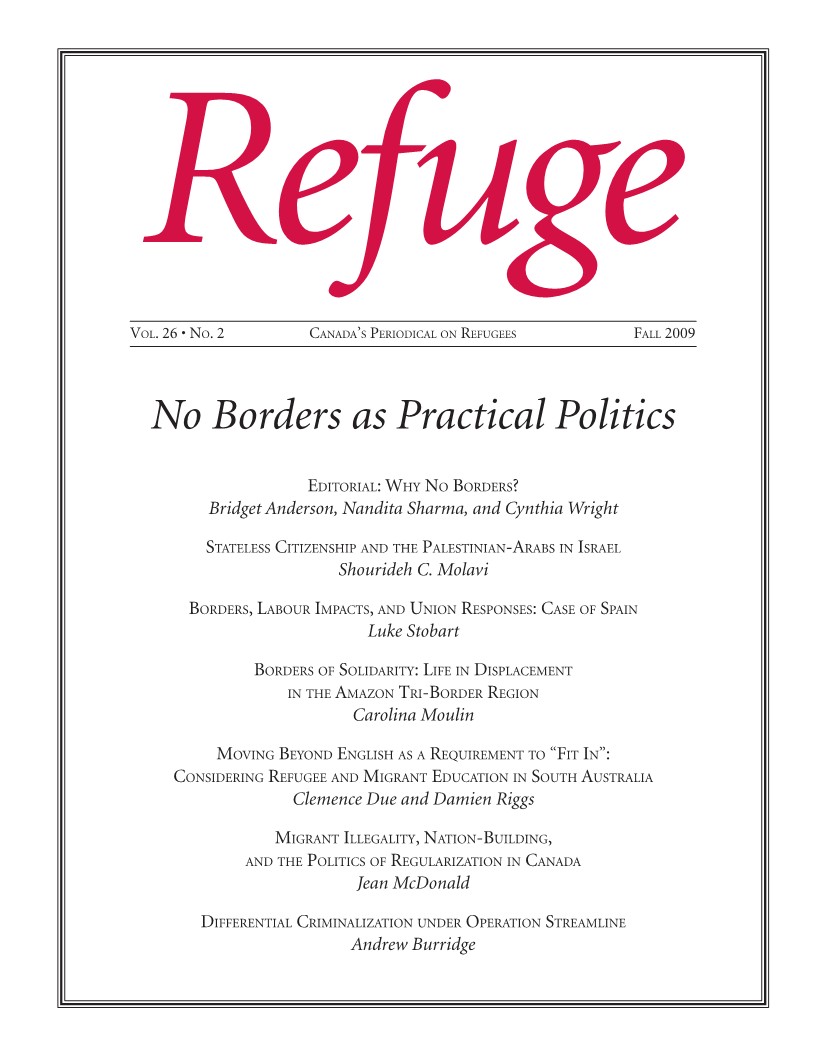Moving Beyond English as a Requirement to "Fit In": Considering Refugee and Migrant Education in South Australia
DOI:
https://doi.org/10.25071/1920-7336.32078Keywords:
Australia, New Arrivals Programs, NAPs, English language proficiency, integration, education, space, refugee youth, migrant youth, power relationsAbstract
This paper presents findings from research conducted in two primary schools in South Australia with New Arrivals Programs (NAPs). The paper draws upon two forms of data: questionnaires administered to teachers and ethnographic observations of children at play in the schoolyard. These data are used to examine two aspects of education for refugees and other migrants: (1) the assumption that English language acquisition is central to the “integration” of refugees and other newly arrived migrants (and both that integration is of key importance and that the work of integration must primarily be undertaken by refugees and other migrants, not the broader community); and (2) the impact of power differentials between NAP and non- NAP students in the use of playground spaces. We argue that the education provided to refugee and newly arrived migrant students in NAPs needs to move beyond treating English language acquisition as a requirement to “fit in,” and we call for schools with high populations of refugee and migrant students to consider how spatial relations in their schools may be negatively impacting these student populations. Finally, the paper calls for an approach to education that is situated in global contexts of colonization and power relations, and in which the terms for inclusion of NAP students are mutually negotiated, rather than predetermined.
Metrics
Downloads
Published
How to Cite
Issue
Section
License
Copyright (c) 2011 Clemence Due, Damien Riggs

This work is licensed under a Creative Commons Attribution-NonCommercial 4.0 International License.
Refuge authors retain the copyright over their work, and license it to the general public under the Creative Commons Attribution-Non Commercial License International (CC BY-NC 4.0). This license allows for non-commercial use, reproduction and adaption of the material in any medium or format, with proper attribution. For general information on Creative Commons licences, visit the Creative Commons site. For the CC BY-NC 4.0 license, review the human readable summary.








